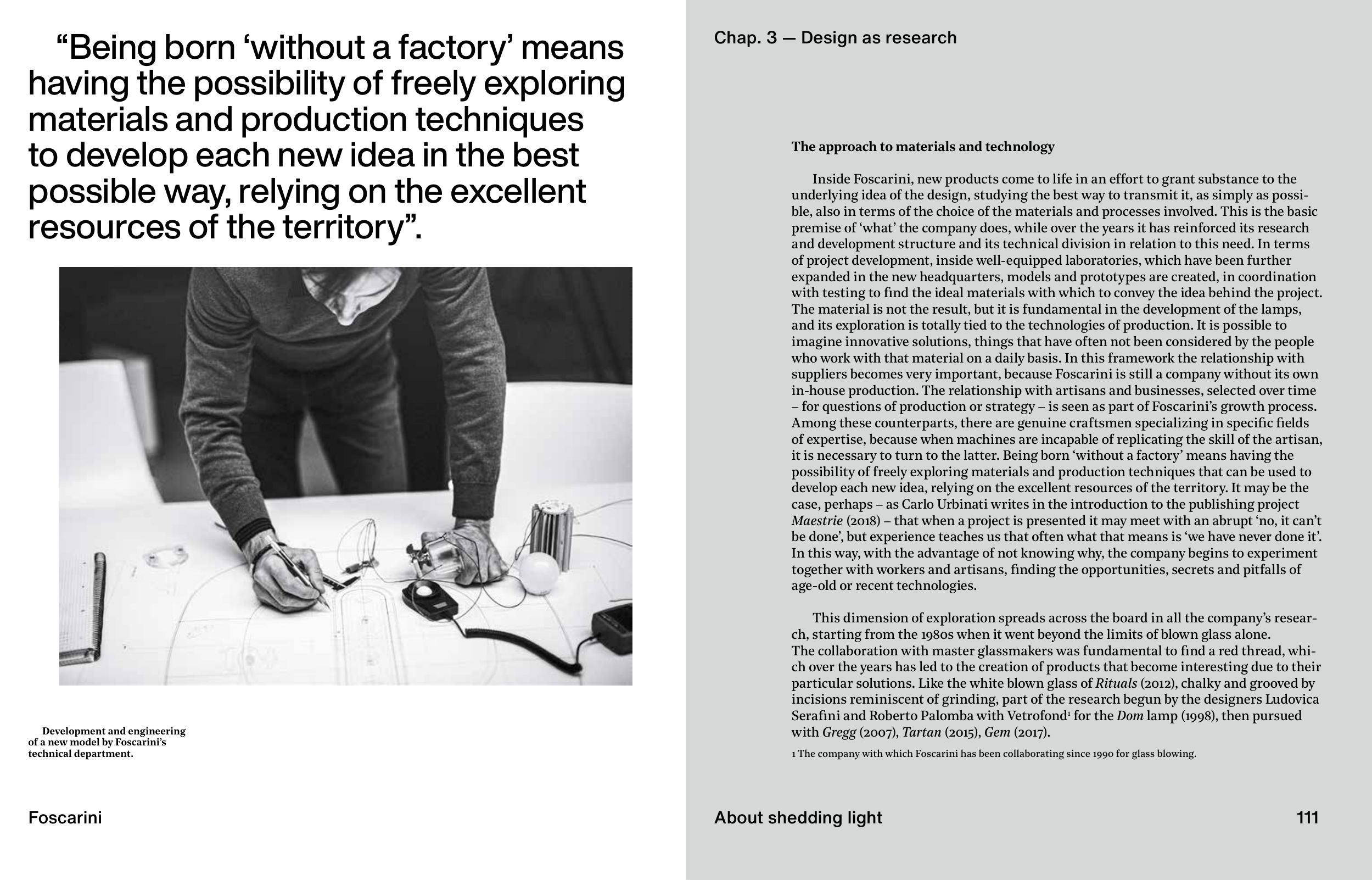Foscarini
111
“Being born ‘without a factory’ means
having the possibility of freely exploring
materials and production techniques
to develop each new idea in the best
possible way, relying on the excellent
resources of the territory”.
Development and engineering
of a new model by Foscarini’s
technical department.
Chap. 3 — Design as research
About shedding light
The approach to materials and technology
Inside Foscarini, new products come to life in an effort to grant substance to the
underlying idea of the design, studying the best way to transmit it, as simply as possi-
ble, also in terms of the choice of the materials and processes involved. This is the basic
premise of ‘what’ the company does, while over the years it has reinforced its research
and development structure and its technical division in relation to this need. In terms
of project development, inside well-equipped laboratories, which have been further
expanded in the new headquarters, models and prototypes are created, in coordination
with testing to fi nd the ideal materials with which to convey the idea behind the project.
The material is not the result, but it is fundamental in the development of the lamps,
and its exploration is totally tied to the technologies of production. It is possible to
imagine innovative solutions, things that have often not been considered by the people
who work with that material on a daily basis. In this framework the relationship with
suppliers becomes very important, because Foscarini is still a company without its own
in-house production. The relationship with artisans and businesses, selected over time
– for questions of production or strategy – is seen as part of Foscarini’s growth process.
Among these counterparts, there are genuine craftsmen specializing in specifi c fi elds
of expertise, because when machines are incapable of replicating the skill of the artisan,
it is necessary to turn to the latter. Being born ‘without a factory’ means having the
possibility of freely exploring materials and production techniques that can be used to
develop each new idea, relying on the excellent resources of the territory. It may be the
case, perhaps – as Carlo Urbinati writes in the introduction to the publishing project
Maestrie (2018) – that when a project is presented it may meet with an abrupt ‘no, it can’t
be done’, but experience teaches us that often what that means is ‘we have never done it’.
In this way, with the advantage of not knowing why, the company begins to experiment
together with workers and artisans, fi nding the opportunities, secrets and pitfalls of
age-old or recent technologies.
This dimension of exploration spreads across the board in all the company’s resear-
ch, starting from the 1980s when it went beyond the limits of blown glass alone.
The collaboration with master glassmakers was fundamental to fi nd a red thread, whi-
ch over the years has led to the creation of products that become interesting due to their
particular solutions. Like the white blown glass of Rituals (2012), chalky and grooved by
incisions reminiscent of grinding, part of the research begun by the designers Ludovica
Serafi ni and Roberto Palomba with Vetrofond1 for the Dom lamp (1998), then pursued
with Gregg (2007), Tartan (2015), Gem (2017).
111
1 The company with which Foscarini has been collaborating since 1990 for glass blowing.


